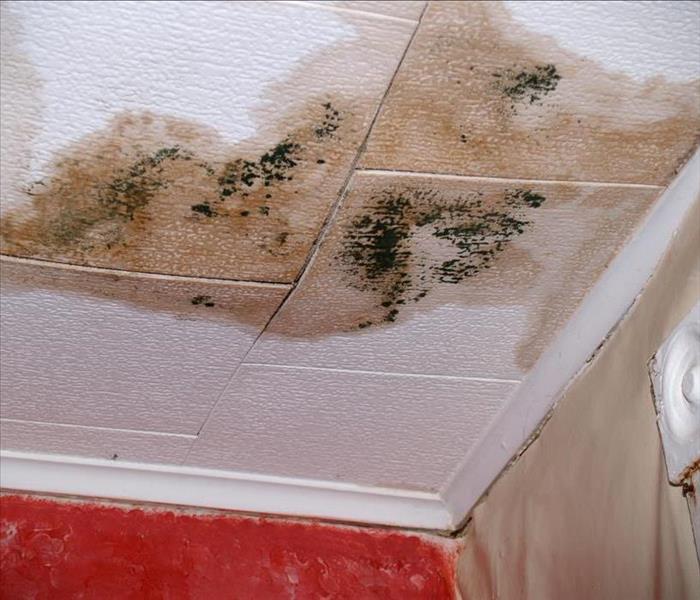5 Places to Check for Mold Growth at Your Business
1/27/2021 (Permalink)
Mold Prevention Tips
Business owners live with this nagging concern in the back of their heads: is there mold growth in the building? Because mold remediation can be costly, a diligent business owner in Austin, TX, knows the likely places—bathrooms, basements, kitchens, and storage rooms—and keeps them clean and dry. But there are a number of other sneaky places where mold can grow. For true mold prevention, here are five to keep an eye on.
1. Ceiling Tiles
If you notice discoloration on ceiling tiles, that indicates a leak which means that there is a prime environment for mold growth. Roof leaks, HVAC systems, and other mechanical systems that are prone to leaking or condensation make it more likely for your ceiling tiles to experience water damage.
2. Carpet
Spills drips, and floods can cause mold to grow on and under carpet. It's important to clean up water from carpet as quickly as possible to avoid damage. This includes proper drying and ventilation. When in doubt, contact a water damage restoration professional for help.
3. Electrical Equipment
Gaps around outlets and cables that allow moist air to flow in and out can cause mold. One mold prevention tip for these areas is to caulk around outlets and cable boxes.
4. Ductwork
During summer months when the air conditioning is running all day, moisture can build up inside and outside the ductwork of your HVAC system. If this happens, you'll ultimately be blowing mold into every room of your business. One prevention strategy is to be careful of where the temperature is set. Another is to replace ducts that have linings built in which tend to accumulate more debris and, therefore, mold.
5. Paper
Stacks of paper that are stored in even slightly damp environments can grow mold fairly quickly. If your office keeps a lot of paper on hand, be sure that it is stored in an area that is dry and well ventilated.
Mold prevention is an important aspect of running a safe business. Keep an eye on sneaky places where mold can grow in order to avoid costly remediation.




 24/7 Emergency Service
24/7 Emergency Service
